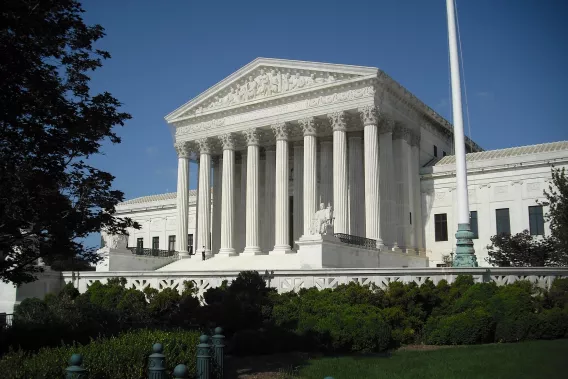- | Regulation Regulation
- | Research Papers Research Papers
- |
Thinking Apolitically about Gerrymandering

Americans express strong concerns about gerrymandering, and with good reason. The practice undermines the perceived fairness of legislative representation and violates the foundational principle of geographic districting, that voters within the same constituency should live reasonably near one another.
In his latest research study, “Thinking Apolitically about Gerrymandering,” Charles Blahous draws the following conclusions:
Americans across party lines share a stake in constraining gerrymandering.
Gerrymandering reform should focus on limiting the warping of legislative district shapes rather than on allocating power between political parties.
A mathematical limit on the allowable irregularity of a legislative district’s shape would constrain gerry- mandering in a manner that is clear, objective, and neutral.
Such a limit is best established by federal statute rather than imposed by judicial intervention.
Gerrymandering's Role in Worsening Political Polarization
Where gerrymandering is effective, it increases the electoral value of a political candidate’s appeal to a plurality within his or her own party, while decreasing incentives to accommodate the viewpoints of independent or opposition-party voters. There is strong evidence for one of gerrymandering’s expected polarizing effects, specifically the rendering of intraparty primaries more competitive relative to general elections. At the same time, however, polarization is increasing in US politics even where gerrymandering is not a factor. Those concerned about political polarization should not want district mapmaking to exacerbate it, despite other factors being more significant.
In this context, it is essential to understand that gerrymandering reform is not best pursued as a political balancing act, for several reasons:
Gerrymandering can be and is practiced for many purposes, of which partisan advantage is only one.
The Constitution protects individual voting rights from discrimination, but it does not guarantee or even suggest that combinations of political interests are entitled to proportional representation.
Most relevantly, gerrymandering reform that simply seeks to balance partisan interests will fail to address many of the ills that Americans perceive in the practice—such as its role in further polarizing US politics, incenting residential segregation along political lines, and making elected officials less responsive to their constituents. These effects can only be mitigated if gerrymandering is constrained directly, rather than by simply seeking to redistribute its gains across political parties.
A Simple, Neutral Reform
Instead of attempting to analyze and limit the motivations and political effects of gerrymandering, a better solution is to limit the scope of gerrymandering itself. This can be done straightforwardly by placing a limit on the allowable irregularity of legislative district shapes. Blahous’s study reviews several alternatives for doing so but focuses on certain simple mathematical tools to constrain the allowable length of a district’s perimeter relative to its area.
The adoption of such a limit would constrain gerrymandering in a manner that is straightforward, politi- cally neutral, and constitutional, without requiring nebulous judgments of political motivations or advantage.
- This approach would also uphold the foundational principle underlying geographical districting, as well as limit incentives for political factions to self-segregate rather than to compete for the votes of constitu- ents with different views.
Using the Intended Constitutional Process
The best route available for achieving gerrymandering reform is changing federal apportionment law. This approach is preferable to recruiting the courts to impose a solution that reallocates power across political parties without prior authority of federal law. This process is also the mechanism envisioned in the US Constitution, which authorizes Congress to make or alter states’ rules for electing representatives. This mechanism has been used many times in the past and could readily be used again, lessening the chances of divisive or capricious judicial intervention in a counterproductive attempt to resolve the issue.

